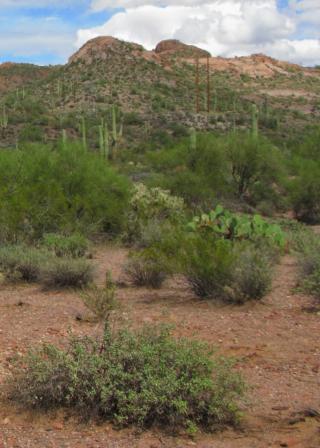Desert soils are dry, getting less than 10 inches of rain a year, and often are not very high in organic matter. Even though it is dry, it does not mean that there is nothing living. After a rainfall, the entire desert blooms. These soils can support agriculture, but often need to be irrigated with water brought in from elsewhere. Soil is formed when rock (parent material) is broken down by climate, organisms and vegetation over a period of time. It is made up of weathered rock fragments and decaying remains of plants and animals (organic matter). It also contains varying amounts of air, water, and microorganisms. It furnishes mechanical support and nutrients for growing plants. Since pore spaces are filled with either air or water, the amount of air in a soil at a particular time depends on the amount of water present in the pore spaces. Immediately after a rain, there is more water and less air in the pore spaces. Conversely, in dry periods, a soil contains more air and less water. Increasing organic matter content usually increases water-holding capacity, but adding undecomposed organic material reduces water capacity until the material has partially decomposed.
Our Desert Soils

Sorry, there are no additional resources for Our Desert Soils.
Sorry, there are no newsletter articles related to Our Desert Soils.
Sorry, there are no FAQs related to Our Desert Soils.

